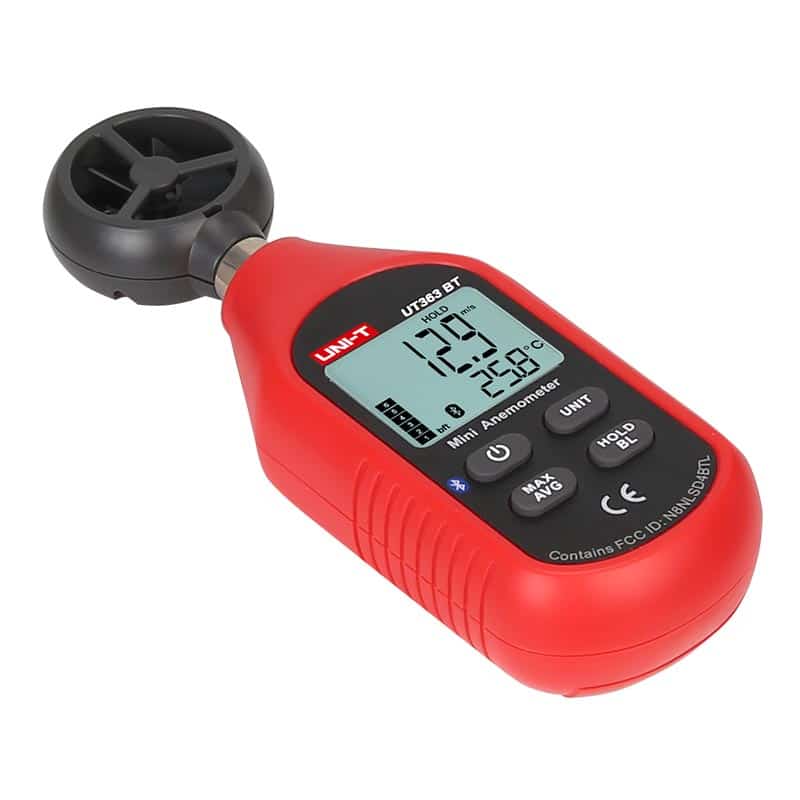Anemometers Revealed: Comprehending Their Relevance in Environmental Surveillance and Safety Procedures
The function of anemometers in environmental surveillance and security measures is commonly undervalued, yet their importance is obvious. From weather forecasting to aviation security, anemometers play an essential duty in offering precise data that educates decision-making processes and boosts general safety and security.
History of Anemometers
The evolution of anemometers can be traced back to the old human beings where rudimentary wind determining tools were first made use of. One of the earliest recognized anemometers was the hemispherical mug anemometer invented by Leon Battista Alberti in the 15th century.
In the 18th century, the distinguished researcher John Thomas Romney Robinson presented the Robinson anemometer, which featured 4 hemispherical cups installed on straight arms that expanded from a main axis. This design became a standard in atmospheric dimensions because of its accuracy and reliability. Over the years, improvements in technology resulted in the development of more modern anemometers, including ultrasonic anemometers and laser Doppler anemometers, offering boosted accuracy and effectiveness in determining wind rate and instructions. The background of anemometers showcases a remarkable journey of advancement and development in the area of weather forecasting.
Kinds Of Anemometers
Throughout the area of weather forecasting, different kinds of anemometers have been developed to properly determine wind rate and direction. Sonic anemometers utilize ultrasonic signals to gauge wind rate and direction precisely. Hot-wire anemometers run based on the principle that the cooling impact of wind on a heated cord is proportional to the wind speed.
Applications in Weather Forecasting
Having talked about the different kinds of anemometers utilized in weather forecasting for gauging wind rate and direction, it is vital to explore their functional applications in the field. Anemometers play a critical duty in meteorology by offering real-time and exact information on wind problems (anemometer). Meteorologists make use of anemometers to monitor wind rate and direction to forecast weather patterns, issue warnings for serious weather events like twisters, tornados, and cyclones, and assess atmospheric problems for air travel security
In meteorology, anemometers help in recognizing local and neighborhood wind patterns, which are essential for forecasting weather condition modifications and determining climatic trends. These tools are likewise used in research study to examine microclimates, urban warmth islands, and air pollution diffusion. Furthermore, anemometers are utilized in farming to optimize plant administration practices, such as watering and chemical application, based on wind problems.
Value in Aeronautics Security
An important aspect of making certain air travel safety hinges on the meticulous surveillance of wind conditions making use of anemometers. Anemometers play a crucial duty in air travel by giving real-time information on wind speed and instructions, aiding pilots in making educated decisions throughout take-off, touchdown, and flight. Uncertain and solid winds can significantly influence aircraft procedures, making it vital for aeronautics authorities to rely upon accurate wind dimensions to make certain the security of guests and crew.

In the vibrant environment of air travel, where even minor adjustments in wind speed and instructions can have profound results, anemometers stand as vital tools for advertising secure and safe air traveling.
Role in Environmental Research Study
Anemometers play a critical function in ecological study by giving vital information on wind speed and direction. By accurately measuring wind characteristics, anemometers help researchers examine the motion of toxins in the air, examine the impact of industrial emissions, and predict the spread of contaminants in the environment.


Verdict
Finally, anemometers have played an essential role in environmental tracking and precaution. With an abundant background and numerous kinds readily available, these devices have been extensively made use of in weather forecasting, air travel security, and environmental research. Understanding the significance of anemometers is vital for accurately gauging wind speed and direction, which is vital for forecasting climate patterns, making sure risk-free aviation procedures, and performing environmental researches - anemometer. Their payments to these areas can not be ignored.
One of the earliest recognized anemometers was the hemispherical cup anemometer developed click to find out more by Leon Battista Alberti in the 15th century. Over the years, developments in modern technology led to the growth of even more modern anemometers, including ultrasonic anemometers and laser Doppler anemometers, using increased precision and performance in gauging wind speed and instructions. Hot-wire anemometers run based on the principle that the cooling result of wind on a heated wire is symmetrical to the wind speed. Meteorologists utilize anemometers to monitor wind speed and instructions to anticipate climate patterns, concern warnings for serious weather occasions like tornadoes, storms, and cyclones, and evaluate atmospheric problems for visite site aeronautics safety.
Understanding the importance of anemometers is vital for precisely gauging wind rate and instructions, which is vital for predicting weather patterns, ensuring risk-free aeronautics operations, and performing environmental studies. (anemometer)
Comments on “Why an Anemometer is Important for Your Environmental Information Collection”